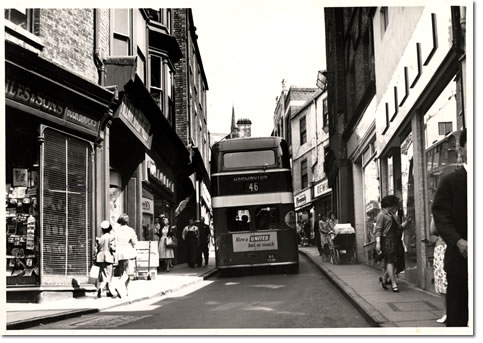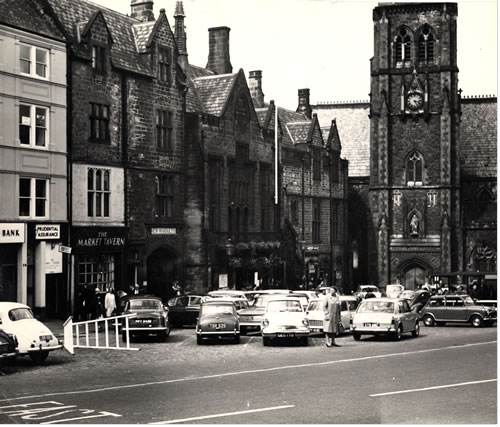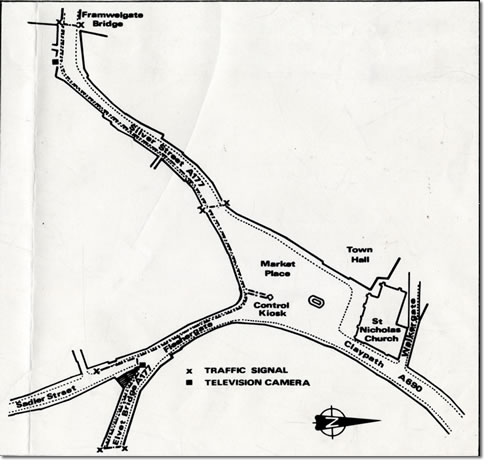
How has transport changed?

Photograph showing bus travelling up Silver Street in Durham, 1950s. (DCRO ref: CC/Pl 949). Click on image to enlarge.
Transport has always played an important part in the development of the Market Place. People needed to take their goods to market to sell and those who bought the goods needed to take them away. As well as the market itself, people who owned and visited the shops in the Market Place needed transport too.
There’s another reason why we need to look at transport. It’s linked to the reason why the Market Place developed where it did.
So how would these people be moving themselves and their goods around? What sort of transport might they have used?
Let’s investigate and find out!

Photograph showing transport in the Market Place in the 1850s. (DCRO ref: EP/Du.Sn 14/502)
Have a look at this photograph. It was taken outside St Nicholas’ Church in 1850.
1. Make a list of all the different types of transport you can see.
2. How do you think most people in the photograph got to the marketplace?
3. What can you see in front of the church?
4. What do you think they were used for?
Finished? Now you have found out how most people travelled around in 1850, why not see how that changed.

Photograph showing the Market Place, c1960s. (DCRO ref: CCPL 1/244)

This photograph was taken in the same place about 100 years later.
1. What different kinds of transport can you see now?
2. How do you think people travelled to the Market Place now? Think carefully. There might be methods of transport that you can’t see on the photograph.
3. Have a look at the road surface. How is it different to the previous photograph?
4. Why do you think road markings are needed in this photograph but not in the other?
5. What can you see in the middle of the road (where the pant used to be)?
6. What do you think it was used for?
Finished? Move on to the next page to find out more.

Diagram showing the traffic control system in Durham Market Place (DCRO ref: CCP 13/234)
As more cars and buses started to travel through the Market Place, more than road markings were needed to help regulate the traffic. The police, who had the task of directing the traffic, needed a way to be able to direct the traffic from Silver Street and Saddler Street through the Market Place. This was difficult because Silver Street is actually a steep hill sloping down from the Market Place.
We can see from this diagram how the problem was solved. Let’s have a good look.
1. Find the control kiosk. How can the police person in the kiosk see down the streets? (Clue – they are marked with little black squares.)
2. How can he signal to the drivers of the vehicles? (Clue – look for the small crosses.)
3. How many traffic signals are there?
Finished? Why not try finding out about who lived in the Market Place?
